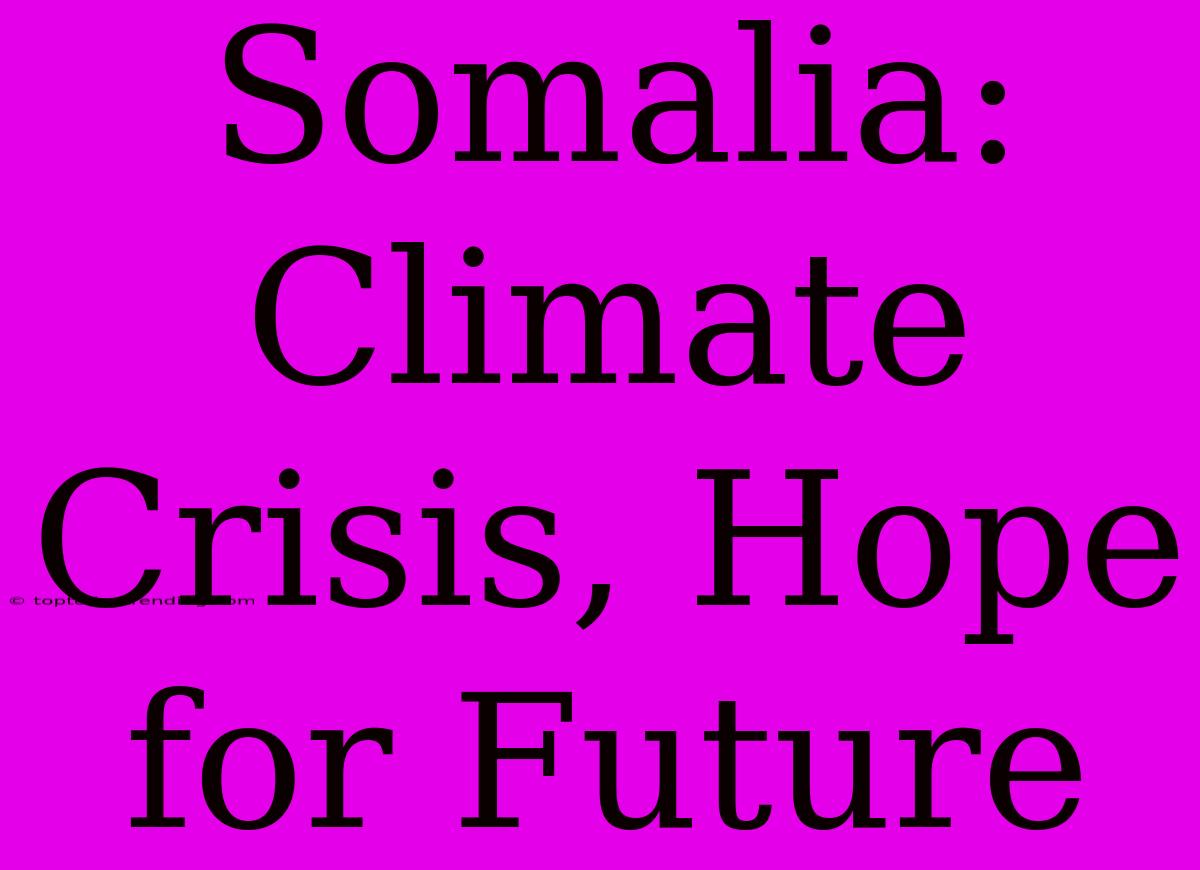Somalia: Climate Crisis, Hope for Future
Somalia, a nation located in the Horn of Africa, is grappling with a complex and multifaceted challenge: the devastating impact of climate change. From prolonged droughts and erratic rainfall to rising sea levels and extreme weather events, the effects of climate change are felt across the country, leaving lasting scars on its people, environment, and economy.
The Dire Reality of Climate Change in Somalia
Drought: Somalia experiences frequent and severe droughts, exacerbated by climate change. The most recent drought, which began in 2020 and continues to this day, has been particularly devastating, leading to widespread famine and displacement.
Food Insecurity: Drought has a devastating impact on agriculture, pushing Somalia into a state of chronic food insecurity. The majority of Somalis depend on agriculture for their livelihoods, and the lack of rainfall has crippled crop yields and livestock production, driving millions into hunger and poverty.
Water Scarcity: Water is a precious resource in Somalia, and climate change has worsened the situation. As rainfall becomes increasingly erratic, rivers and lakes dry up, forcing communities to rely on increasingly scarce water sources. This has led to conflict over resources and increased vulnerability to disease.
Displacement: Climate-induced disasters, particularly drought, have forced millions of people from their homes, leading to a humanitarian crisis. These internally displaced people (IDPs) lack access to basic necessities, such as food, water, shelter, and healthcare, further compounding their vulnerability.
Coastal Erosion: Rising sea levels threaten Somalia's coastal communities. The erosion of beaches and coastal land is leading to the loss of livelihoods, infrastructure, and valuable ecosystems.
Conflict and Instability: Climate change is exacerbating existing conflicts and creating new tensions. The struggle over scarce resources, such as water and land, often fuels violence and instability, making it difficult to address the underlying challenges of climate change.
Glimmers of Hope: Building Resilience in the Face of Climate Change
Despite the grim reality, there are reasons for hope. Somalia is taking steps to mitigate the impacts of climate change and build resilience:
Government Action: The Somali government has recognized the urgency of the climate crisis and is developing policies to address it. These include investing in early warning systems, promoting sustainable agriculture practices, and working with international partners to access climate finance.
Community Resilience: Somali communities are demonstrating remarkable resilience in adapting to the challenges of climate change. They are developing innovative solutions, such as rainwater harvesting techniques, drought-resistant crops, and community-based disaster preparedness plans.
International Collaboration: Somalia is working with international organizations, such as the United Nations and the World Bank, to access funding, technical expertise, and capacity building programs to strengthen its climate change adaptation and mitigation efforts.
Investing in Renewable Energy: Somalia is exploring opportunities to transition to renewable energy sources, reducing its dependence on fossil fuels and minimizing greenhouse gas emissions.
Focus on Education and Awareness: Raising awareness about climate change and empowering communities with the knowledge and skills to adapt is crucial. Educational programs and community outreach initiatives are helping to promote understanding and action.
Looking Ahead: A Path Towards Sustainability
Somalia's journey toward a sustainable future requires a multi-faceted approach:
Investment in Climate Adaptation: Prioritizing investments in climate adaptation measures is essential to protect vulnerable communities and ecosystems from the impacts of climate change. This includes strengthening water resources management, promoting sustainable agriculture, and supporting coastal protection efforts.
Building Resilience: Building the resilience of communities and ecosystems to climate change requires a focus on education, capacity building, and empowering local communities to participate in decision-making processes.
Promoting Sustainable Development: Moving towards a more sustainable development model that prioritizes environmental protection, resource conservation, and social equity is critical. This requires a shift in mindset and a commitment to long-term planning.
International Cooperation: International cooperation is crucial to support Somalia's efforts to address climate change. This includes providing financial assistance, sharing technology, and working together to create a global framework for climate action.
The future of Somalia depends on the collective action of government, communities, and international partners. By embracing a proactive and collaborative approach, the country can navigate the challenges of climate change and build a more sustainable and resilient future.

